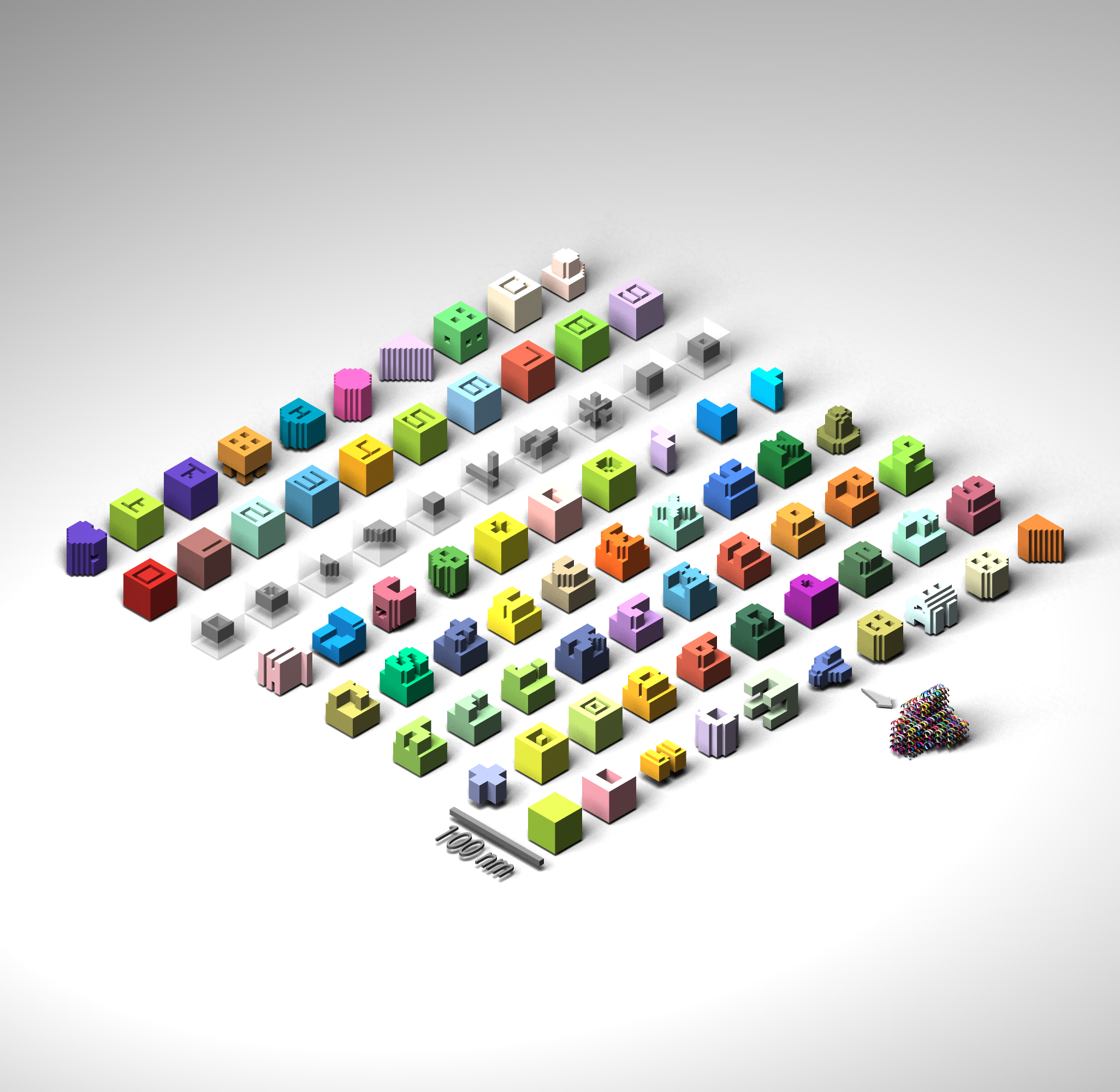
Yonggang Ke, Luvena Ong, William Shih, Peng Yin
Science. doi: 10.1126/science.1227268, 1177-1183 (2012).
Downloads: PDF, 7 pages.
Abstract: We describe a simple and robust method to construct complex three-dimensional (3D) structures by using short synthetic DNA strands that we call “DNA bricks.” In one-step annealing reactions, bricks with hundreds of distinct sequences self-assemble into prescribed 3D shapes. Each 32-nucleotide brick is a modular component; it binds to four local neighbors and can be removed or added independently. Each 8–base pair interaction between bricks defines a voxel with dimensions of 2.5 by 2.5 by 2.7 nanometers, and a master brick collection defines a “molecular canvas” with dimensions of 10 by 10 by 10 voxels. By selecting subsets of bricks from this canvas, we constructed a panel of 102 distinct shapes exhibiting sophisticated surface features, as well as intricate interior cavities and tunnels.
Supplementary material: PDF, 240 pages

Summary figure: Tiny, nanoscale DNA structures assembled from DNA bricks. Each brick is a short, synthetic single strand of DNA.
Back to publications